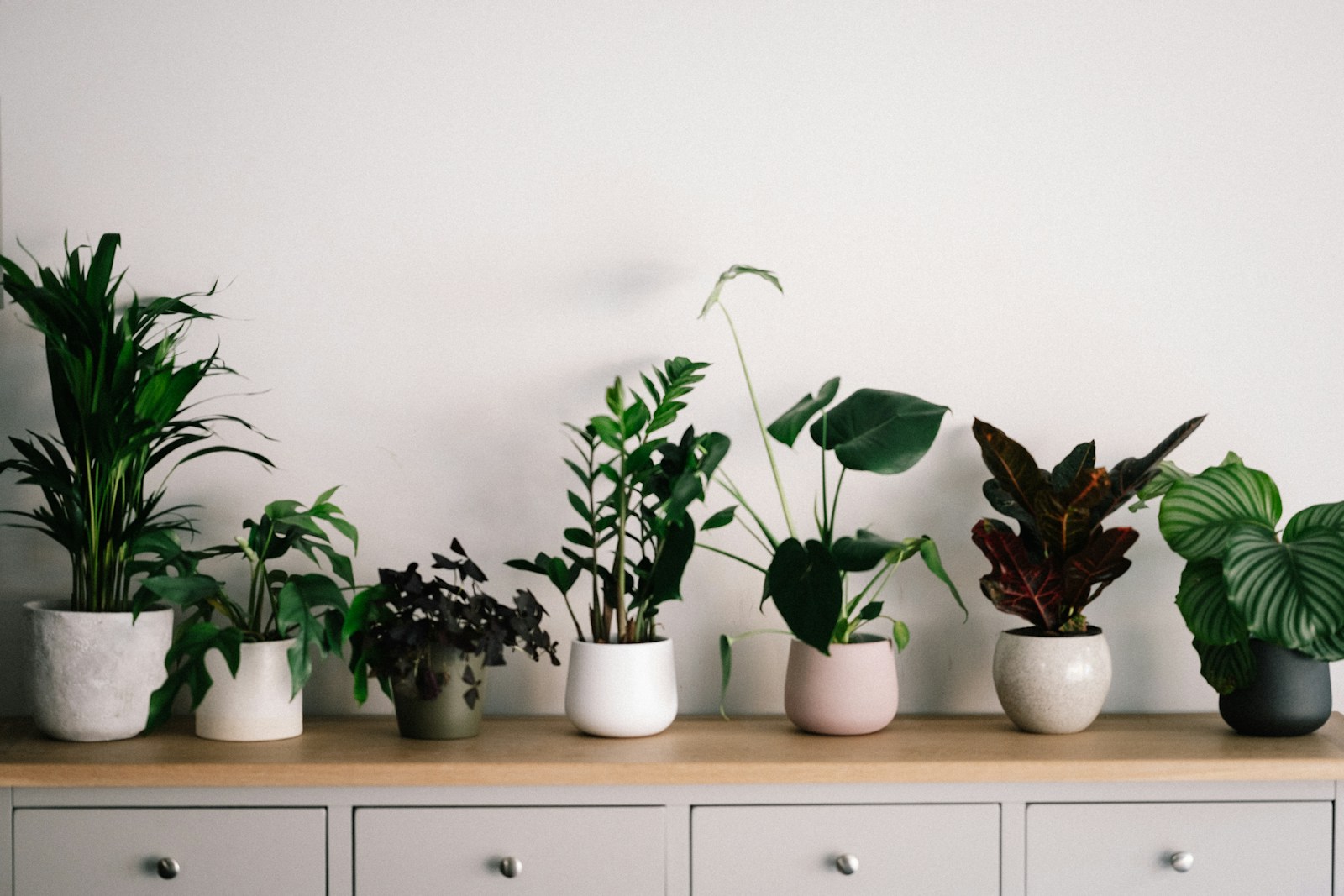Houseplants have the ability to improve room humidity levels through a process known as transpiration. Transpiration is the release of water vapor through the plants’ leaves, which increases the moisture content in the air surrounding the plant. This can be especially beneficial in indoor environments where humidity levels tend to be low due to heating and air conditioning systems. Houseplants act as natural humidifiers by releasing water vapor into the air, helping to balance the humidity levels in a room. This process not only benefits the plants themselves but also contributes to creating a more comfortable indoor environment for occupants.
The Science Behind Transpiration
Transpiration is a fascinating biological process where water absorbed by a plant’s roots travels through the plant and is eventually released as water vapor from small pores on the leaves called stomata. This cycle is crucial for the plant’s nutrient uptake and temperature regulation. But how does it impact indoor humidity?
- Water Cycle in Plants: As plants take in water through their roots, it travels through the plant and evaporates from the leaves. This loss of water vapor cools the plant and allows for the uptake of carbon dioxide, essential for photosynthesis.
- Humidity Impact: The evaporated water vapor contributes to the moisture level of the surrounding air, thereby increasing indoor humidity, which is particularly beneficial during the winter months when indoor heating can significantly reduce air moisture.
How Transpiration Works
Transpiration is influenced by several factors, including light, temperature, humidity, and wind. During the day, plants open their stomata to allow for gas exchange, necessary for photosynthesis. This opening also enables water vapor to escape, increasing the surrounding humidity.
- Light and Temperature: Higher light levels and temperatures usually increase the rate of transpiration. For instance, placing a plant near a sunny window will likely increase its water release due to the warmth and light exposure.
- Humidity and Wind: In contrast, high humidity levels can slow down transpiration since the air is already saturated with moisture. Likewise, a gentle breeze can enhance transpiration by moving saturated air away from the plant’s surface.
Plants as Natural Humidifiers
Certain houseplants, such as ferns, palms, and peace lilies, are particularly effective at increasing humidity levels in a room. These plants have a high transpiration rate and can release significant amounts of water vapor into the air. By strategically placing these plants in different areas of a room, one can create pockets of higher humidity, which can be beneficial for both the plants and the occupants.
Effective Plant Choices
- Ferns: Boston ferns and maidenhair ferns are excellent choices for natural humidification. They thrive in indirect light and high humidity, making them perfect for bathrooms or kitchens.
- Palms: Areca palms are not only visually appealing but also efficient at releasing moisture into the air. They can grow quite large, making them ideal for living rooms or open spaces.
- Peace Lilies: Known for their air-purifying qualities, peace lilies are also adept at increasing humidity. They are relatively easy to care for and can thrive in lower light conditions.
Beyond the Basics: Other Humidity-Boosting Plants
While ferns, palms, and peace lilies are crowd favorites, there are many other plants that can contribute significantly to indoor humidity levels.
- Spider Plant (Chlorophytum comosum): This resilient plant is easy to grow and has a high transpiration rate. Its long, arching leaves add a lively touch to any room.
- Rubber Plant (Ficus elastica): Known for its large, glossy leaves, the rubber plant is excellent for enhancing humidity and air quality. It thrives in bright, indirect light and requires moderate watering.
- Bamboo Palm (Chamaedorea seifrizii): Ideal for low-light environments, this palm is effective at increasing humidity and purifying the air. It prefers moist soil and regular misting.
Placement and Care
- Strategic Placement: To maximize the humidifying effect, place plants in areas where you spend the most time. Grouping plants can amplify the humidity level, creating a microclimate beneficial for both the plants and occupants.
- Routine Care: Regular watering is crucial, but be careful not to overwater, which could lead to root rot. Mist plants occasionally to simulate a humid environment, especially in arid climates or heated homes.
Creating Plant Microclimates
Creating microclimates with carefully placed groups of plants can enhance their humidity-boosting abilities. Here are some practical tips:
- Bathrooms: Leverage the naturally high humidity of bathrooms by placing humidity-loving plants like ferns or orchids on windowsills or shelves.
- Kitchens: Utilize the warmth and moisture generated from cooking by placing plants like peace lilies or spider plants on counters or tables.
- Living Areas: Place larger plants like palms or rubber plants in living rooms to naturally humidify and purify the air.
Effect on Health and Comfort
Optimal humidity levels in a room can have various health benefits, including reducing the risk of respiratory issues, dry skin, and allergies. Additionally, maintaining proper humidity levels can improve overall comfort, especially during dry seasons or in arid climates. Houseplants play a vital role in natural humidification and can contribute to creating a healthier and more pleasant indoor environment.
Health Benefits
- Respiratory Health: Increased humidity can help keep mucous membranes in the respiratory tract moist, reducing the likelihood of catching colds or experiencing sinus irritation.
- Skin Health: Humid environments can prevent the skin from drying out, reducing the risk of conditions such as eczema and dermatitis.
- Allergy Relief: Proper humidity levels can help mitigate the effects of dust and allergens in the air, providing relief to allergy sufferers.
Personal Experience: Breathing Easier
As someone who struggles with seasonal allergies, I’ve found that maintaining a collection of houseplants significantly alleviates my symptoms. The plants help maintain a comfortable humidity level, reducing the dryness in the air that often exacerbates my respiratory issues. Plus, the air feels fresher and cleaner, making it easier to breathe, especially during high pollen seasons.
Psychological Comfort
Beyond physical health, houseplants contribute to psychological well-being. The presence of greenery indoors has been shown to reduce stress, enhance mood, and improve concentration and productivity.
Enhancing Mood and Reducing Stress
There’s something inherently soothing about the presence of plants. Their greenery can make a space feel more inviting and less sterile, which is particularly beneficial in work-from-home setups or during long indoor periods. In fact, studies have shown that plant-filled environments can lower blood pressure and reduce stress levels, creating a more relaxed and pleasant atmosphere.
Scientific Evidence
Several studies have shown the positive impact of houseplants on indoor humidity levels. Research conducted by NASA has demonstrated that certain plants can effectively remove toxins from the air while increasing humidity. Additionally, a study published in the Journal of Physiological Anthropology found that indoor plants can help maintain optimal humidity levels, thereby improving overall well-being.
Case Studies
- NASA Clean Air Study: Initially conducted to find ways to purify air in space stations, this study revealed that houseplants can remove up to 87% of air toxins in 24 hours. While the primary focus was on air purification, the increased humidity was a noted benefit.
- Productivity and Well-being: A study by the University of Exeter found that offices with plants increased worker productivity by 15%. The improved air quality and humidity were significant factors contributing to this boost.
Additional Research
- University of Washington Study: This study explored the psychological benefits of indoor plants and found that the presence of greenery can improve concentration and memory retention, making plants a helpful addition to home offices or study areas.
- Tokyo Institute of Technology Research: Researchers investigated how plant arrangements influence humidity levels and found that strategically placed plant clusters can create varying humidity zones, which can be tailored to individual room needs.
Common Mistakes and How to Avoid Them
While houseplants are a fantastic addition to any indoor space, there are common pitfalls to avoid to ensure they thrive and provide maximum humidity benefits.
Overwatering
A prevalent mistake is overwatering, which can lead to root rot and plant death. Roots need to breathe, and waterlogged soil can suffocate them.
- Solution: Use pots with drainage holes and allow the top inch of soil to dry out between waterings. Consider using a moisture meter to gauge soil hydration accurately.
Incorrect Light Conditions
Each plant species has unique light requirements. Placing a plant in the wrong lighting can stunt its growth or even kill it.
- Solution: Research each plant’s light needs. For instance, ferns prefer indirect light, while succulents thrive in direct sunlight.
Neglecting Air Circulation
Stagnant air can lead to mold and pests, which are detrimental to plants and indoor air quality.
- Solution: Ensure proper air circulation by occasionally opening windows or using a fan. This practice helps distribute the moisture and prevents mold growth.
Personal Insight: Learning from Experience
When I first started incorporating plants into my home, I struggled with overwatering, especially during the winter months when my instinct was to water more due to the dry air. After losing a few plants to root rot, I invested in a moisture meter, which was a game-changer. It helped me understand the specific needs of each plant, allowing them to thrive and contribute to a more humid and comfortable home environment.
Practical Tips for Maximizing Humidity
To make the most out of your plants’ humidifying capabilities, consider these additional tips:
- Group Plants: Cluster your plants together to create a mini greenhouse effect, enhancing the humidity in that area.
- Use Pebble Trays: Place pots on trays filled with pebbles and water. As the water evaporates, it increases the surrounding humidity.
- Incorporate Water Features: Small indoor fountains or aquariums can complement the humidifying effects of plants, particularly in larger rooms.
Additional Tips for Plant Success
- Choose the Right Soil: Ensure your plants are potted in soil that provides good drainage while retaining enough moisture to support the plant’s needs.
- Regular Maintenance: Trim dead leaves and regularly clean the leaves to ensure optimal photosynthesis and humidity release.
- Monitor Humidity: Use a hygrometer to track humidity levels and adjust plant placement or misting routines to maintain a comfortable environment.
Integrating Technology and Nature
For those who are technologically inclined, blending smart home systems with plant care can optimize humidity levels even further.
- Smart Sensors: Use humidity sensors to monitor air moisture levels and adjust plant care routines accordingly.
- Automated Watering Systems: Invest in systems that provide precise watering schedules, ensuring plants receive adequate moisture without the risk of overwatering.
Combining Tech with Nature: A Personal Perspective
Incorporating smart technology into my plant care routine has been a rewarding experience. Using smart plugs and timers, I’ve automated my plant lights and humidifiers, ensuring a consistent environment for my plants even when I’m not home. This integration not only boosts plant health but also keeps my home environment comfortable and balanced.
By incorporating houseplants into indoor spaces, individuals can create a more comfortable environment that supports both physical health and emotional well-being. With informed plant selection, proper care, and strategic placement, you can harness the power of nature to enhance indoor humidity, improve air quality, and transform your living space into a vibrant oasis of health and comfort.




